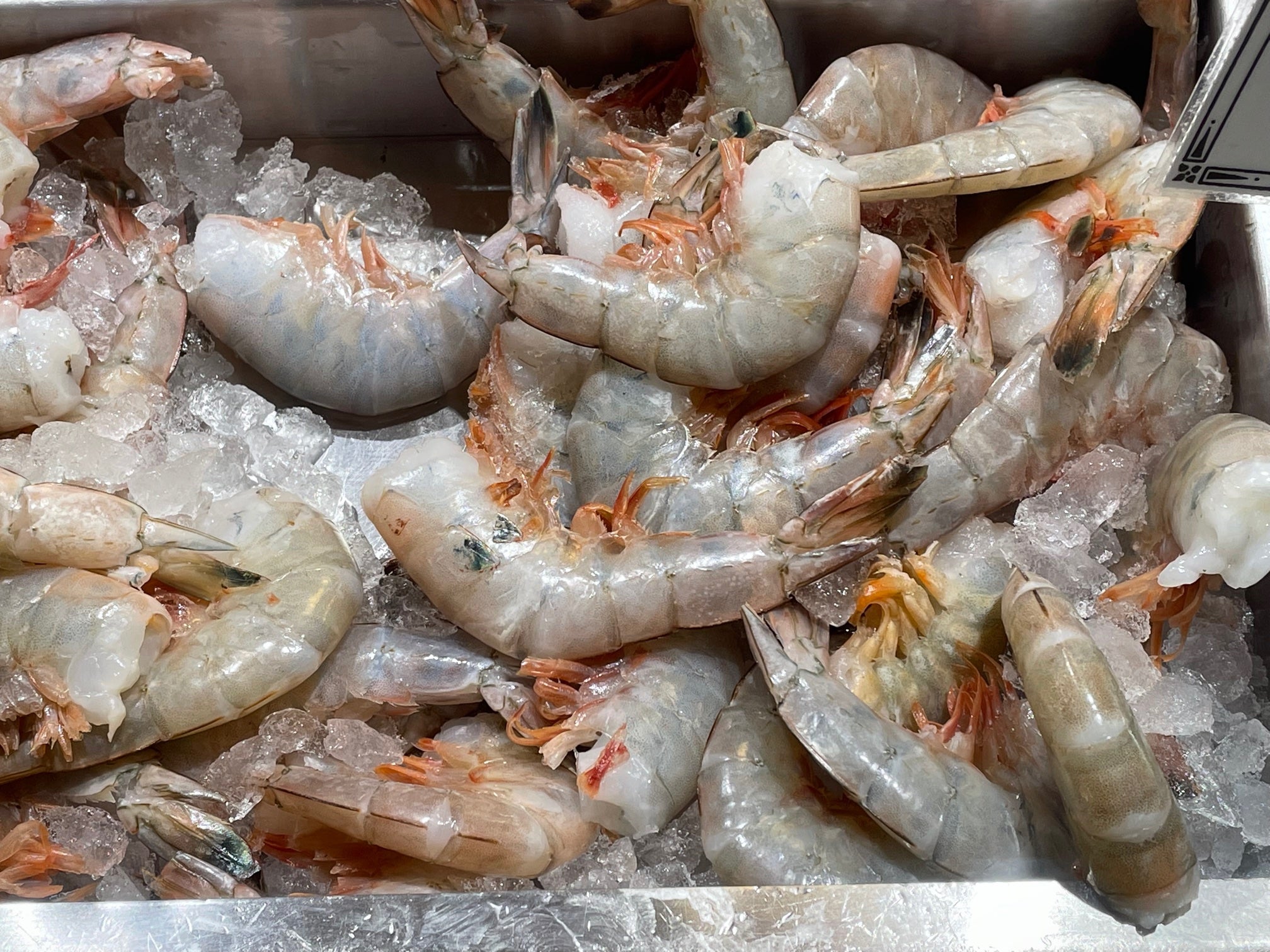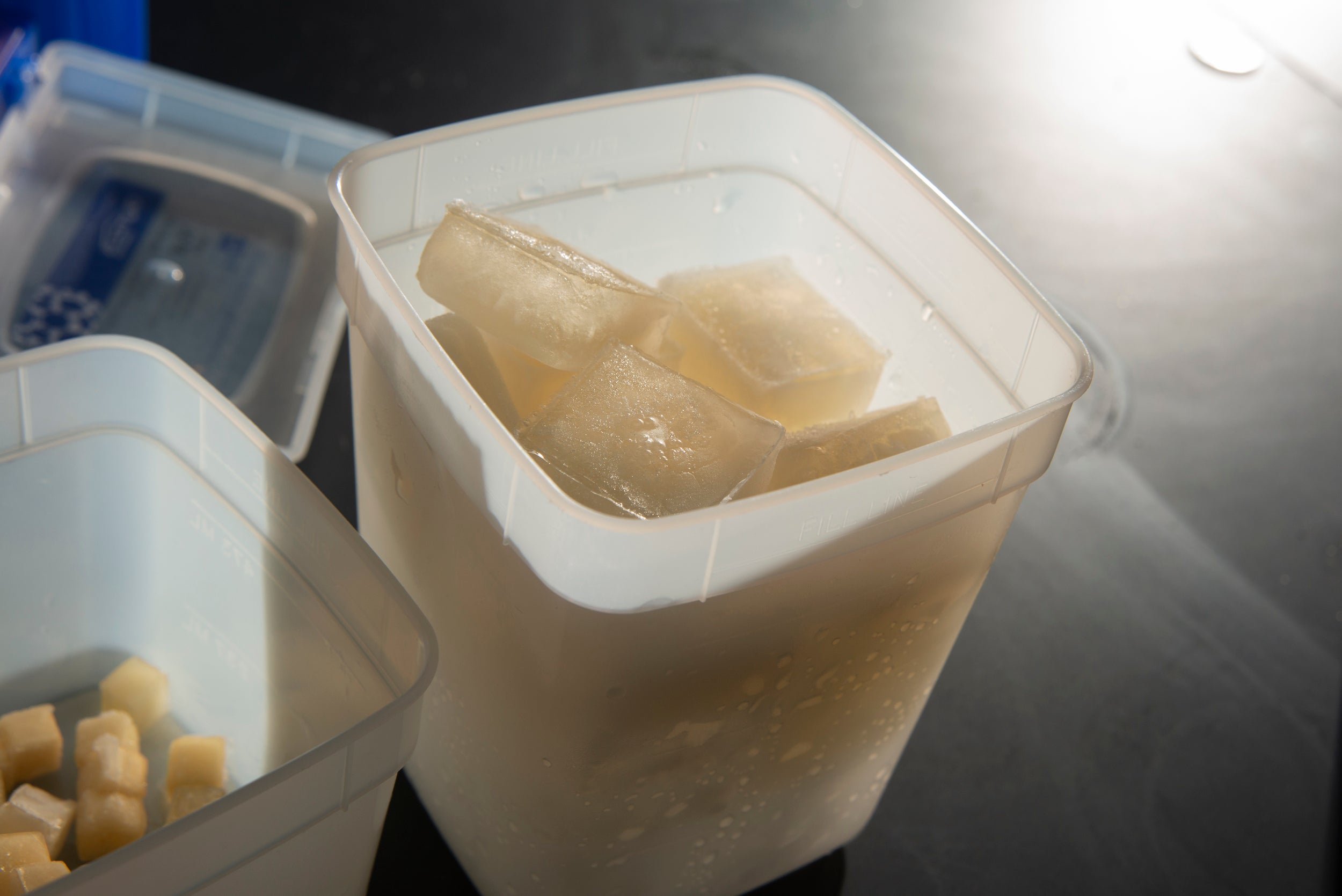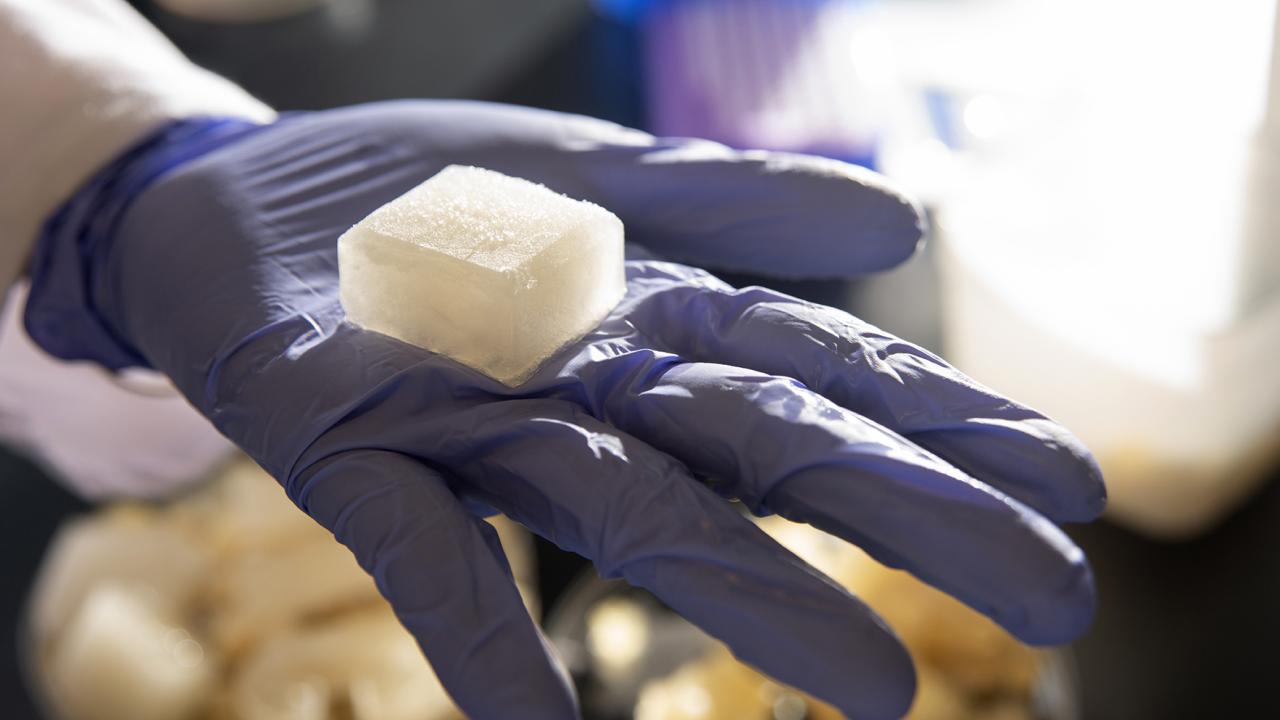Quick Summary
- Cooling cube designed to prevent cross-contamination
- New jelly ice cube is not plastic and won’t melt
- Cubes are reusable, flexible and compostable
Researchers at the University of California, Davis, have developed a new type of cooling cube that could revolutionize how food is kept cold and shipped fresh without relying on ice or traditional cooling packs.
These plastic-free, “jelly ice cubes” do not melt, are compostable and anti-microbial, and prevent cross-contamination.

Explore more stories on food and agriculture
“When ice melts, it’s not reusable,” said Gang Sun, a professor in the Department of Biological and Agricultural Engineering. “We thought we could make a so-called solid ice to serve as a cooling medium and be reusable.”
The cooling cubes contain more than 90% water and other components to retain and stabilize the structure. They are soft to the touch like a gelatin dessert and change color depending on temperature.


Reusable and flexible
These reusable cubes can be designed or cut to any shape and size needed, said Jiahan Zou, a Ph.D. graduate student who has been working on the project the past two years.
“You can use it for cooling, collect it, rinse it with water and put it in the freezer to freeze again for the next use,” Sun added.
A patent for the design and concept was filed in July.
The researchers hope to eventually use recycled agriculture waste or byproduct as the coolant material.
“We want to make sure this is sustainable,” said Luxin Wang, an associate professor in the Department of Food Science and Technology.
Fish market wastewater, moldy ice blocks spurred idea
The researchers began working on the coolant cubes after Wang saw the amount of ice used at fish-processing plants and the cross-contamination that meltwater could spread among products or down the drain.

“The amount of ice used by these fish-processing sites is massive,” Wang said. “We need to control the pathogens.”
Sun also lamented mold found in the plastic ice packs used with school lunches for kids and frequently found in shipping packages.
Early tests have shown the cubes can withstand up to 22 pounds without losing form. They can be reused a dozen times — just a quick wash with water or diluted bleach — and then disposed of in the trash or with yard waste.
Alternative to ice
The jelly ice cubes offer an alternative to traditional ice and could potentially reduce water consumption and environmental impact. They also offer stable temperatures to reduce food spoilage and could be ideal for meal prep companies, shipping businesses and food producers who need to keep items cold.


The application could potentially reduce water consumption in the food supply chain and food waste by controlling microbial contaminations. The research was published in the American Chemical Society’s journal, Sustainable Chemistry & Engineering.
The USDA National Institute of Food and Agriculture awarded a $485,000 grant for the research, and proof-of-concept work began in January 2020.
Media Resources
Media Contacts:
- Luxin Wang, Department of Food Science and Technology, lxwang@ucdavis.edu
- Gang Sun, Department of Biological and Agricultural Engineering, gysun@ucdavis.edu
- Jiahan Zou, Department of Biological and Agricultural Engineering, jhzou@ucdavis.edu
- Amy Quinton, UC Davis News and Media Relations, cell 530-601-8077, amquinton@ucdavis.edu
- Emily C. Dooley, College of Agricultural and Environmental Sciences, cell 530-650-6807, ecdooley@ucdavis.edu
